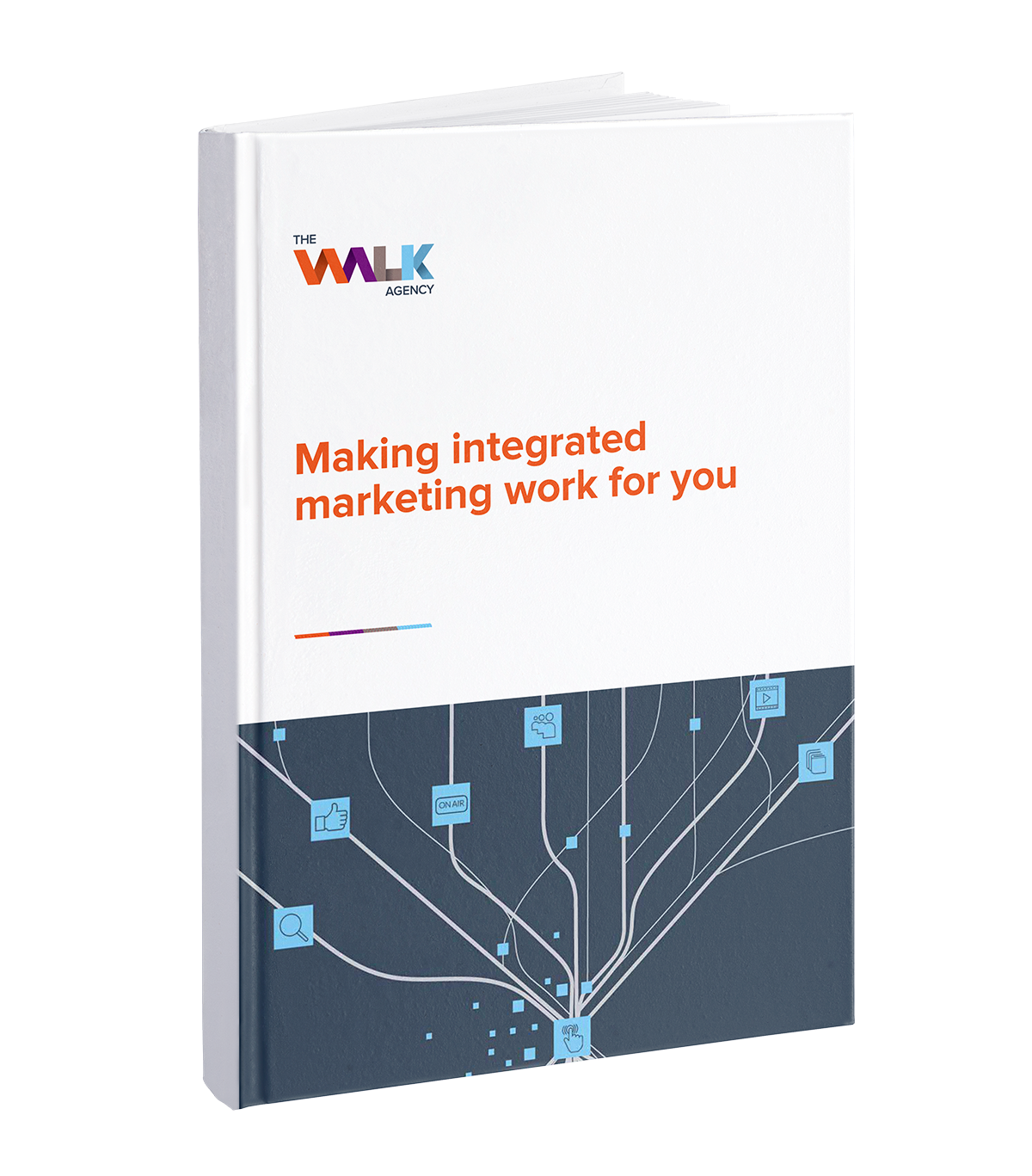Yes, data informs us about how well our campaigns are doing, but some elements of marketing are less tangible, such as the power of creativity.
You can measure business growth, revenue, profit, conversions, web traffic, and clicks, but if inspired creativity is the most salient aspect of marketing, how do we tangibly quantify its effectiveness? We’re talking about people’s subconscious and unconscious mental relationships with brands and their associated collateral. Can this be disseminated from the data we comb through when assessing our integrated marketing campaign results?
Stats have never provided the entire picture
When it comes to integrated marketing, there are numerous ways to measure how well a campaign has performed. From traceable phone numbers to trackable vouchers, and unique vanity URLs shown in print ads, we’re able to ascertain where people have come from on their journey to interact with your brand. A good example of this is our campaign with Fronditha Care.
Fronditha Care had the unenviable task of needing to fill beds in an aged care facility during a global pandemic where much of the time people were locked down in their homes. In addition to social media and Google advertising, and due to a large segment of the target audience being less digitally savvy, our integrated marketing approach involved a campaign run in local newspapers and radio. A custom phone number was used for the campaign, which meant we could track where people had heard about the aged care facility’s available beds.
Measuring data also allows us to work out how many people clicked on your digital marketing ad. But how many of those clicks were from genuine customers interested in your product or service? You can count how many people visited your website’s landing page, but how many converted into solid calls to action like enquiries, phone calls, or sales? Most importantly, which aspect of the ad drove them to take action? Will they now become loyal, repeat customers? Did your brand story seep into the recesses of their subconscious mind? You want to be remembered.

How do you define effective marketing and advertising?
When analysing your marketing, we look at budget, channels, and the performance of your media spend. We often measure your campaigns’ reach, approaches to targeting, the currency of its topics, and the strength of your overall brand identity. The funny thing is, around half of all sales attributed to advertising efforts come from the power of its creative.
“
47% of brands’ sales increases come from the quality of its ad creative.
”
Research by Nielsen Catalina Solutions showed 47% of brands’ sales increases come from the quality of its ad creative. How is this measured? While we can work hard at extrapolating data to prove this, a uniquely executed marketing campaign results in the type of engagement that isn’t always easy to measure or comprehend. We need to understand what drives people to take action.
Success is different to everyone. Choose metrics to measure and optimise your marketing.
What’s your brand’s current marketing goal?
There are a lot of metrics you can collect data for and analyse, but are you focused on improving long-term brand awareness, or on boosting sales in the short-term?
It’s sad to say, but the marketing and advertising arena has no shortage of operators who can provide ‘results’ that look great on paper, but which are closely followed by excuses on why the increase in clicks or web traffic hasn’t resulted in conversions.
Your marketing agency may report you’ve had a 50% increase in web traffic, while simultaneously gaining 200 new followers on social media. Who are these new people visiting your site and following your brand? Are they valuable leads? You need to ask yourself whether these numbers have actually impacted your bottom line and driven business growth.
The truth is, the performance of your brand and its sales isn’t so easy to pin down – especially if you’re running an integrated, omnichannel marketing campaign. First, we need to give the lead role to a customer-centric perspective, with measurements of performance receiving a supporting part of the overarching plotline.

Customer-centric metrics for successful brand marketing
Customer lifetime value (CLV)
It’s only logical. When you can get the same customer to patronise your brand’s services or products over several years, the estimated amount of revenue added to your bottom line can be extremely valuable. Compare this with having to develop new customer relationships for each and every sale you make, and you can see why boosting this metric is so important when playing the long game.
Brand recognition and brand awareness
Your target audience needs to be able to identify your brand when surrounded by competing names in the marketplace, as well as attaining a top-of-mind association with your brand’s related product or service. Measuring these metrics involves tracking brand awareness, brand recall, sentiment on social media platforms, and earned mentions online.
For the uninitiated yet to travel down this brand identity rabbit hole, social media sentiment is a way of measuring how people feel about your brand’s use of social media channels, including their attitudes when engaging with it on social networks. Earned mentions are simply the number of times your brand has been discussed or linked to by people and businesses online.
Driving brand awareness via off-line channels
Traditional marketing channels like print, billboards, and TV commercials are still incredibly relevant and effective in the digital era. Here we need to focus on how the marketing has impacted consumers to then take action. Although you’re advertising off-line, once a campaign is complete you can use digital tools to track how many people searched for your brand or product names and count the number of social media mentions during the campaign.

We can run surveys to measure brand recall and intent to purchase, as well as analysing and measuring direct, referral, and branded traffic.
Measuring off-line activity
It’s the 2020’s, so this means even old school marketing can be measured. For example, we can get data on how much traffic to your website or app came from people seeing your brand’s signage, billboards, in-store posters and ads, and the array of other printed marketing channels at your disposal.
As mentioned, traceable phone numbers, trackable vouchers, and unique vanity URLs can tell us where people heard about your brand before making a call to action. Since the pandemic, QR codes have also come into play. When connected to unique URL addresses, they make your marketing interactive, which subsequently provides data about prospective customers’ actions. If a QR code is connected to a special offer, you can measure how many people opened it versus how many made an actual purchase via your online shopping cart.
Customer-centric metrics for increasing sales
Brand consideration
Ultimately, we need to discover whether people are interested in making a purchase from your brand. This comes down to brand consideration. Metrics like CTR (Click-through rate), CPC (Cost-per-click), and ROAS (Return on ad spend) can be analysed and optimised to boost conversions while keeping your budget down.
To maximise ROI, you need to analyse your media ad campaigns across all channels. In addition to CTR, CPC, and ROAS, we can study conversion rates, measuring the percentage of times your ads lead to a desired action such as a purchase or subscription.
Have your heard of The Walk’s ROI Challenge?
Over three months we’ll use the same marketing channels as your current or previous agency, an identical ad spend, and we’ll achieve better results. It’s the type of challenge we’re genuinely keen to sink our teeth into. Contact The Walk now to take your marketing to the next level.

Double ROI: return on investment, and return on imagination
“
Creative content is queen in the chess match of psychological storytelling for the marketplace.
”
Marketing is an investment. At the Walk, we offer a return on imagination to achieve the traditional ROI. What does this entail? Creative content is queen in the chess match of psychological storytelling for the marketplace. We’d all love to measure subconscious responses to our marketing via pupil dilation or brain activity, and this may be the case once website cookies have gone the way of cassette tapes or leaded petrol. For now, multiple studies show highly creative marketing can capture more people’s attention and is more effective at driving engagement and calls to action.

Quality creative is unique, engaging, eliciting an emotional response
Research shows a positive correlation between an ad campaign’s creativity and its real-world profitability. In our view, this is, ‘return on imagination’. The Harvard Business Review discusses how money invested in a highly creative ad campaign, on average, has nearly double the sales impact of a ‘safe’, non-creative campaign. The study showed less than 3% of 437 campaigns analysed were highly creative. Less than 3%. Let that sink in for a moment.
We understand the value of travelling every path possible, cutting no corners to integrate emotional elements into our clients’ creative marketing strategies. Think of all the ads that have implanted themselves into your subconscious over the years – the commercials, the jingles, the taglines. These distinctive marketing campaigns are genuinely memorable, making such a powerful impact they’ve even become a part of the social fabric, and our collective consciousness. This isn’t simply an exercise in brand awareness or achieving customer lifetime value; if you do something amazing, people inevitably seek it out. We focus on doing great things, so they can gain their own natural momentum.
At The Walk, we take great pride in our creative, as shown in our hero video for Lenovo and Microsoft. We believe in the power of good creative to help you stand out from the endless stream of noise and stimuli in the world today. When this creative is used across numerous channels in the right way, and at the right times, you’ll begin to see why we do what we do. It’s all about performance for your spend – higher recall and purchase intent – or as we like to say, return on imagination.




